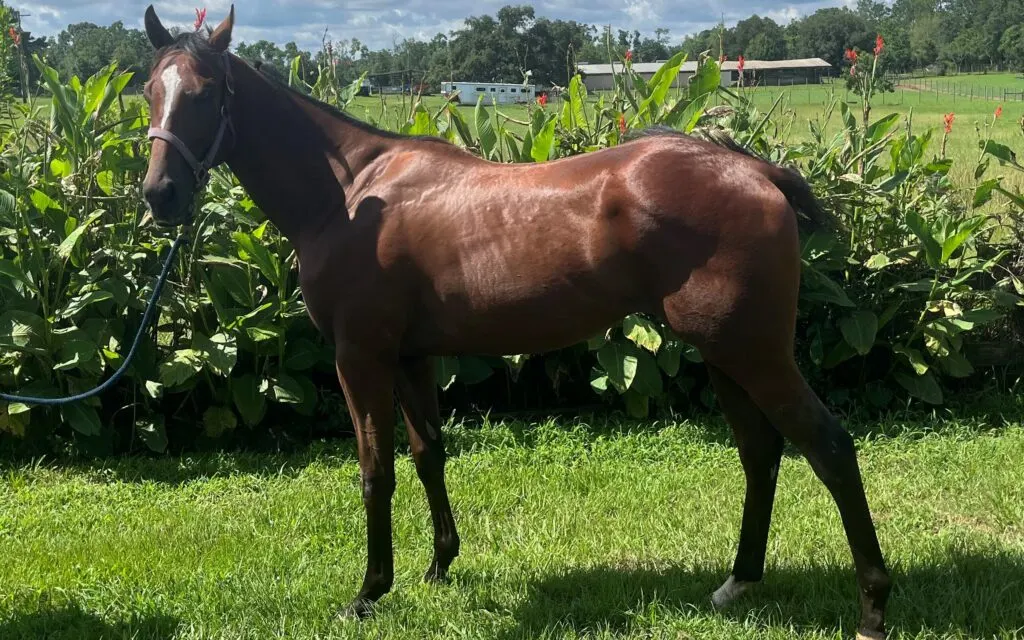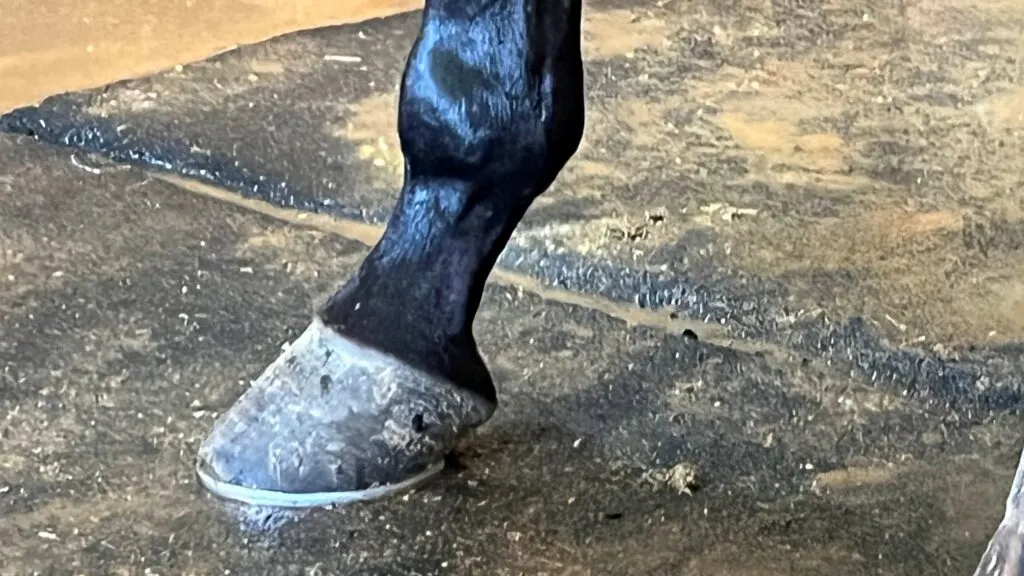Last updated: December 6, 2022
Any links on this page that lead to products on Amazon are affiliate links and I earn a commission if you make a purchase. Thanks in advance – I really appreciate it!
My granddaughter’s barrel horse bowed a tendon and is going to lie up for a while. Her horse has tons of potential but can’t stay healthy, and this recent injury caused her to wonder why horses are so fragile.
Horses are fragile because of the structure of their anatomy. The two most prevalent issues are the relatively delicate bones in their legs and feet, which are tasks with supporting the enormous weight of the animals’ bodies and their sensitive digestive systems.
Many horse owners think horses are fragile but are they? Horses survived and thrived for thousands of years before being domesticated. So, could many of their health issues be related to the way we treat them?

Knowledge is vital for horse owners.
Horses are majestic and beautiful animals that people often own as pets but don’t have a proper understanding of how they should be taken care of to maintain their health.
Horse owners must have the ability to identify the threats that can make a horse ill, injured, or even cause its death. Such injuries and diseases come without warning and can become fatal in a short period.
However, many of a horse’s health problems can be prevented with proper grooming, regular hoof care, and correct feeding practices.
A horse’s digestive system is fragile.
Just like all animals, horses are susceptible to severe injuries and health problems, but they seem to have an extremely fragile digestive tract. They also spend most of their time on their feet, which makes them prone to foot and leg injuries and abnormal gait problems.
The digestive system of horses works continuously. The horse has to keep some kind of forage in its stomach at all times; this is crucial to maintaining a healthy and active digestive system.
If the horse’s digestive tract doesn’t stay in balance, a horse can suffer severe health problems and contagious diseases like influenza, heaves, colic, laminitis, etc.

Severe health problems
Colic
One of the most common and deadliest health problems is Colic. It causes abdominal pain due to improper bowel functioning, bringing the digestive system to a halt. The bowels malfunction because of undigested grains, excessive sand in the gut, parasites, twisted intestines, or a gas lock.
The severity of this disease can vary from mild to severe to the point of euthanization, and it is the common cause of death among horses. Symptoms of colic may vary depending on the type of horse.
However, primary signs of colic include pawing and biting at the side due to a lack of fresh manure in the surrounding area.
Spasmodic and impact colic is the most common type of colic. Spasmodic occurs due to the formation of excessive gas. In such conditions, even stretching the gut causes pain. Impact colic is due to a buildup of dry and coarse feed or some kind of obstruction.
Horses suffer pain when the stretched gut wall contracts to push out the obstruction. In some cases, horses suffering from colic may try to lie down, roll on the ground, bite at their belly, or make kicking motions towards it.
However, the stomach may rupture in severe cases, and deadly complications can occur within a few hours of the initial impaction.
If you believe your horse is suffering from any of these symptoms, immediately call your veterinarian. Try walking the horse for up to an hour, which will activate the intestines, and massage the impaction loose to help pass the gas or blockage.
One method to prevent colic is to regularly incorporate beet pulp or bran mash to minimize their ingestion of sand. Take precautionary measures to ensure that the horse does not ingest dirt, sand, or other inappropriate materials.
Make sure to provide clean drinking water and practice regular deworming as recommended by the vet.

Horses’ legs are fragile.
Laminitis
Several reasons can cause serious foot and leg injuries; working on hard surfaces is one of them. Lameness is a result of splints, soft-tissue enlargements, and damage to the hooves.
Laminitis is inflammation of the laminae, which are specific internal structures in the horse’s hooves. It’s a type of connective tissue that secures the coffin bone to the hoof wall. Laminitis results from overeating grain, not getting enough exercise, or too much lush grass.
Laminitis can be agonizing for the horse whenever it tries to put weight on the injured hoof. This injury can lead to lameness and even euthanasia.
The laminae support the pedal bone in the hoof and thus the weight of the horse. In extreme cases, the pedal bone can sink and rotate as the damaged laminae cannot support it. If the pedal bone sinks too deep, you can see it protrude from the sole.
Laminitis affects the front hooves, but it can affect all four hooves. It has four stages – developmental stage, acute, subacute, and chronic. High fevers and obesity are some of the common symptoms of laminitis.
Besides, if you see the horse standing with an arched back, putting more weight on one foot, or the foot is too hot to touch, immediately call your vet.
You can set the horse’s legs in cold running water, remove grain from the forage, and prevent it from moving around too much by confining it to a small stall.

Equine Arthritis
Equine arthritis means redness, swelling, and inflammation of the joints. The inflammation impedes the horse’s ability to move freely and comfortably. Different types of arthritis can affect horses, including osteoarthritis and ringbone.
Other conditions include subchondral cystic lesions, traumatic arthritis, osteochondritis dissecans, and septic arthritis. Anti-inflammatory drugs can help in treating horses with arthritis.
Navicular Diseases
It is a disease that is caused due to the degenerative condition of the navicular bone and navicular bursa. According to a study, 8.8% of horses have navicular bone injuries. These conditions involve increased pressure within the navicular bone and its blood supply.
It damages the internal navicular bone, the breakdown of the flexor tendon, the demolition of cartilage on the surface of the bone, and the abnormal outgrowth of bone on the bone’s borders. It is a syndrome of complex and long-term disease development.
Navicular diseases can affect both forefeet. It shortens the stride, and the horse may tend to stumble. Conformation of the lower limb, poor shoeing, and a jarring injury or trauma can be contributing factors.
Nonsteroidal anti-inflammatory drugs and proper foot management can help in treating horses with navicular diseases. Proper foot management includes trimming and shoeing that can help in restoring normal bone alignment and balance.

Horses are fragile and susceptible to reproductive problems.
Reproduction Problems
Reproductive diseases are common in horses and can affect the mare, stallions, and foal. Some common reproductive issues are breeding soundness problems, complications faced during and after the delivery of a foal, and complications that affect carrying a foal to term.
The vet conducts a thorough examination of such problems. The vet will examine the overall physical health of the horse with particular emphasis on the reproductive organs.
Other issues include perineal and vulvar lacerations, prolapsed uterus, postpartum metritis, delayed uterine involution, bleeding, and nursing problems.
Parasites and Diarrhea
As horses spend most of their time outside, they come in contact with parasites like lice, ticks, roundworms, tapeworms, and lungworms. There are two types of parasites – internal parasites and external parasites.
Internal parasites are the ones that affect the intestines and digestive tract of horses. Removing manure from stalls and paddocks frequently and limiting their exposure to the source is crucial.
Deworming can help in controlling internal parasites. A proper parasite control program is essential to maintain your horse’s good health.
External parasites happen when your horse loses hair and constantly rubs its skin on objects. Give them a thorough bath frequently and comb out their mane and tail.
Further, parasites and different bacterias are some of the common causes of equine diarrhea. Horses with diarrhea suffer frequent bowel movements, scours, and loose stools.
Scours will drain the horse’s vital water and electrolyte, which leads to rapid dehydration. Dehydration causes weight loss, kidney failure, laminitis, and toxemia.
Other causes include moldy hay and lush green grass. Diarrhea isn’t a severe issue and may resolve itself with the consumption of good-quality forage and nutrients. However, contact your vet if the horse has diarrhea for more than 8 to 12 hours.
Conclusion
Horses are fragile, but with a proper understanding of their anatomy, many health problems can be prevented. If your horse suffers from severe leg injuries and digestive problems, have the animal seen by a veterinarian as soon as possible.
Surround yourself with knowledgeable horse people if you are a first-time horse owner. You will never stop learning and remember horses require proper and regular care, which includes a healthy diet, vaccines, exercise, and grooming.
Below is a YouTube video that explains the signs and symptoms of colic in horses.
